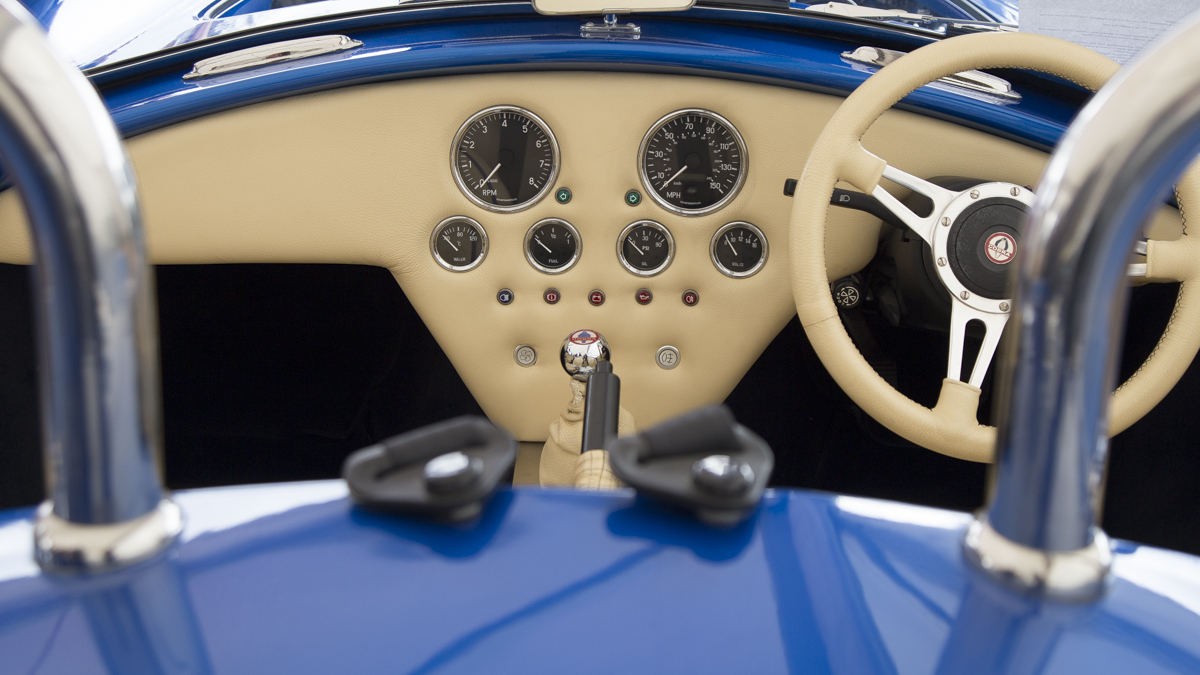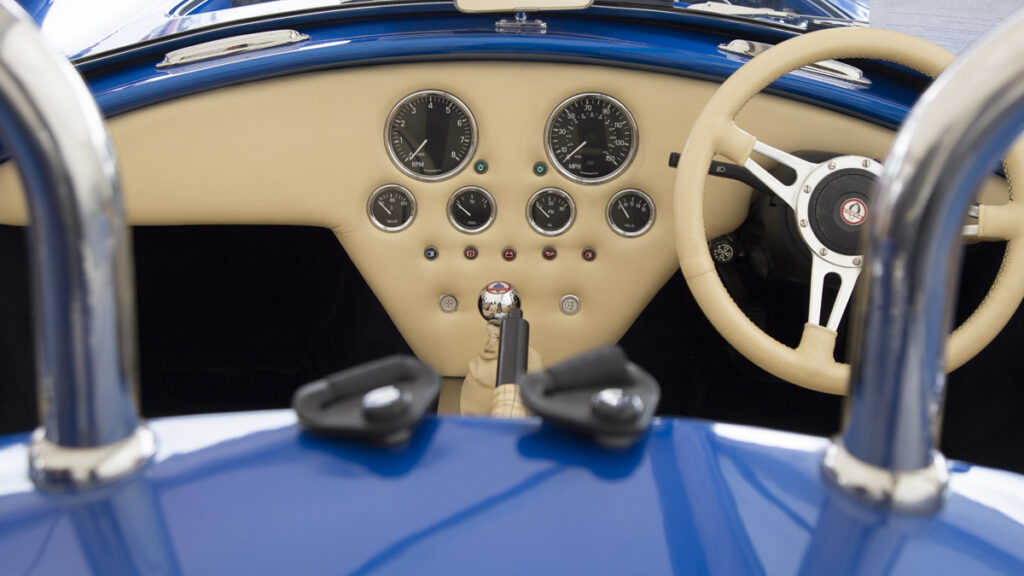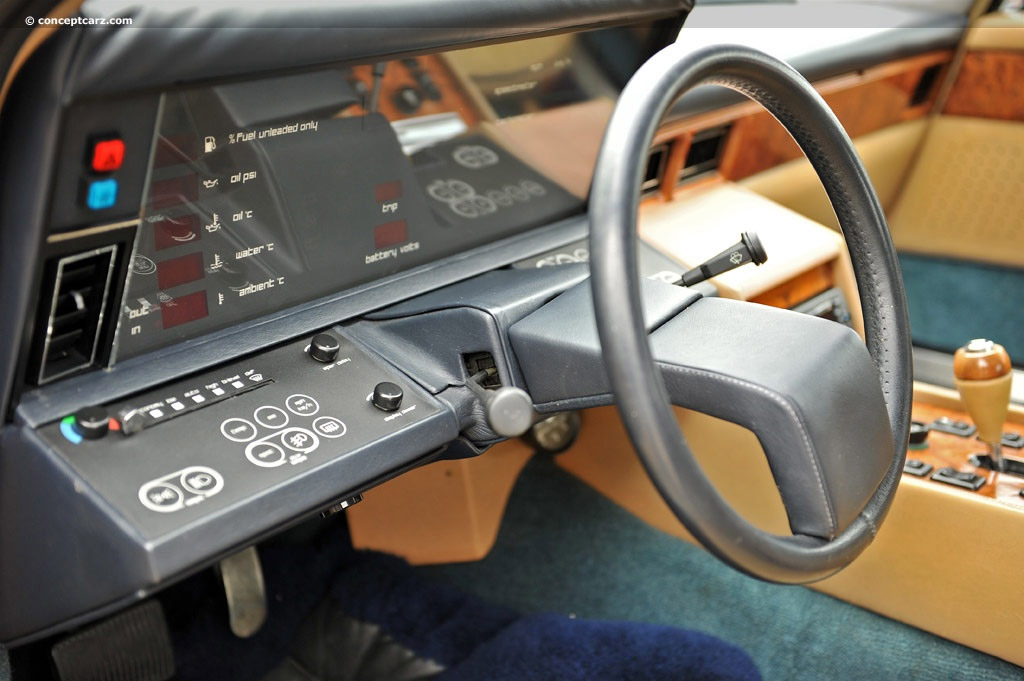
Every car has a dashboard. Some dashboards are stylish and some are simply functional. Some dashboards, like that of the AC Cobra are stunning, with this photograph showing a cream fascia featuring six SMITHS gauges.

It is hard to believe that the original ‘dashboard’ was simply a barrier of wood or leather fixed at the front of a horse-drawn carriage to protect the driver from mud thrown up (or ‘dashed up’) by the horses’ hooves. With the introduction of the first ‘horseless carriages’ in the late 19th century (like the Daimler Stahlredwagen), the engines were mounted beneath the driver. Debris was then being thrown up by the wheels of the car and so the ‘dashboard’ was retained.
The evolution of the car resulted in the engine being mounted at the front of the vehicle. The dashboard retained its protective nature, providing a barrier between the heat and oil of the engine and the occupants. With increasing complexity of the car design and engine, the dashboard then became the ideal location for gauges and minor controls.
In the cars of today, a dashboard will feature an array of gauges (e.g. Speedometer, Tachometer, etc.) and systems for climate control, entertainment and satellite navigation. Even modern screen displays are fixed into the dashboard.
As car design evolved, the issue of safety gained importance and in 1948 the Tucker became the first car with a padded dashboard. By the 1970s padded dashboards were standard. However, the next significant step in safety was not seen until the introduction of airbags in the early 1990s.
Although dashboards like those seen on the AC Cobra or TVR are stylish and sleek, throughout motoring history there are others that have been slightly over-complicated. The Aston Martin Lagonda Series 2 (launched in 1978) was particularly futuristic and reflective of the time. The ultra-modern dashboard had digital LED displays and touch pad controls, but the steering wheel controls and gas plasma display were abandoned in 1980. The Maserati Boomerang, with all the controls inside the steering wheel, was another luxury sports car that took dashboard evolution in a strange direction.

The car dashboard will continue to evolve. On some cars, the speedometer is projected up onto the windscreen, removing the need for an instrument in the dashboard. However, there is always something special about a stylish dashboard featuring glowing instrumentation as you are driving in the dark late at night. Long live the dashboard with an array of gauges and instrumentation.
For further information on instrumentation for classic cars and motorcycles please contact us on:
Phone: 01639 732200
Email: [email protected]